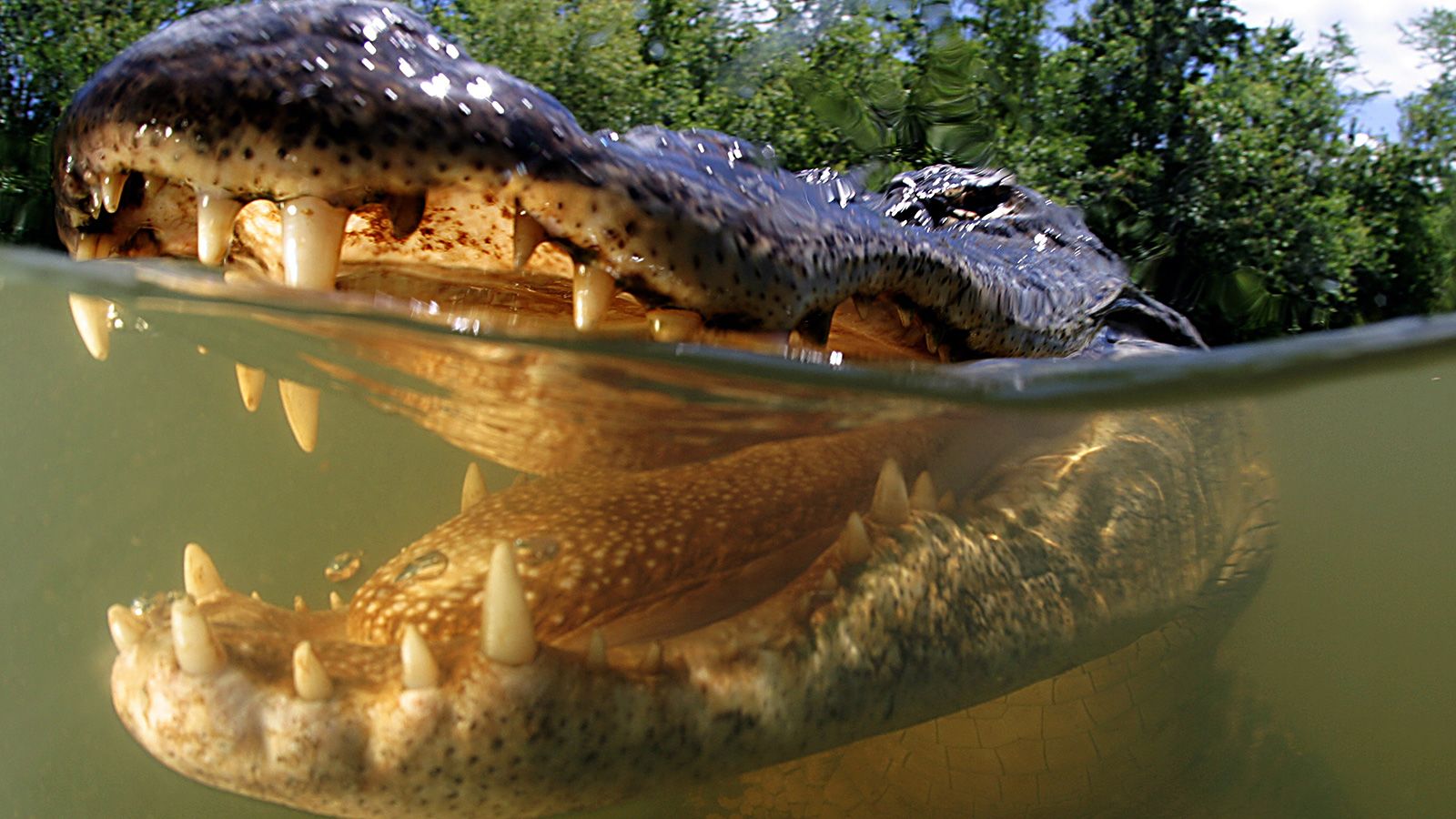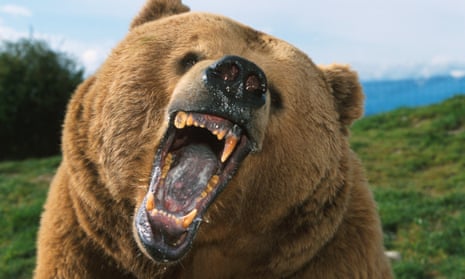If you dream about a moose attack, it may symbolize feelings of being overwhelmed or threatened in your waking life. Now, let’s explore the meaning and interpretation of this dream in more detail.
Dreams have long been a subject of fascination and curiosity, and they often contain hidden messages and symbols that can provide valuable insights into our subconscious minds. One common dream that people may experience is a moose attack. While this dream may seem alarming or bizarre, it can hold significant meaning and symbolism.
When we dream about a moose attack, it is essential to consider the emotions and context surrounding the dream. The moose, with its massive size and powerful presence, represents strength and dominance. The attack, on the other hand, signifies feelings of being overwhelmed or threatened in some aspect of our lives. This dream can also reflect a struggle for power or control. Perhaps you are experiencing conflicts or power struggles at work or in your personal relationships. It could indicate feelings of being trapped or forced into a situation where you have little control. Additionally, the moose attack dream might be a manifestation of deep-rooted fears or anxieties. These fears may be related to a specific situation or circumstance, or they could be more general and abstract. It is crucial to pay attention to the details and emotions of the dream to gain a deeper understanding of its significance. Reflecting on the dream, journaling, or speaking with a therapist or dream interpreter can help unravel its meaning and how it relates to your waking life. Dreaming about a moose attack symbolizes feelings of being overwhelmed, threatened, or involved in power struggles. Understanding the hidden meanings and symbols in our dreams can offer valuable insights into our subconscious minds and help us navigate through challenging situations.

Credit: www.amazon.com
Understanding Moose Behavior
Gain insight into moose behavior to better interpret your dream about a moose attack. Understand their habits and instincts to unravel the meaning behind your subconscious experience.
Moose, with their towering size and impressive antlers, are iconic creatures that roam the forests and marshlands of North America. While they may appear docile, it is essential to understand their behavior to stay safe when encountering them in the wild. This knowledge can mean the difference between a peaceful observation and a potentially dangerous situation. In this article, we explore the fascinating adaptations of moose in the wild, as well as their mating season and aggression patterns.
Adaptations Of Moose In The Wild
Moose have evolved a set of unique adaptations that allow them to thrive in their natural habitats. These adaptations enable them to navigate through dense forests and endure harsh winters. Let’s take a closer look at some of these remarkable features:
- Size and Strength: Moose are the largest members of the deer family, with males (bulls) reaching heights of up to 6.5 feet at the shoulder and weighing over 1,000 pounds. Their massive size acts as an excellent deterrent against predators.
- Antlers: The antlers of a male moose serve multiple purposes. They are primarily used during the mating season to establish dominance and attract mates. Furthermore, they provide a means of defense against potential threats, such as predators or rival males.
- Hooves and Legs: Moose possess long, sturdy legs that aid in traversing through deep snow and marshy terrain. Their large, splayed hooves act like snowshoes, helping them maintain balance and preventing them from sinking into soft ground.
- Unique Nose and Ears: A moose’s nose is designed to protrude slightly above the water’s surface, allowing them to breathe while foraging underwater. Their ears are also uniquely shaped, enabling them to locate sounds within their surroundings.
Moose Mating Season And Aggression
Understanding moose behavior during mating season is crucial for staying safe around these magnificent animals. During this time, known as the rut, male moose become highly aggressive as they compete for breeding opportunities. Here are some key points to note:
- Rutting Behavior: Male moose engage in displays of dominance to establish their reproductive rights. They will often use their antlers to spar with other males, pushing, and shoving each other in fierce battles. It is vital to maintain a safe distance and never get between two competing bulls.
- Increased Vocalization: Mating season brings an increase in moose vocalizations. Bulls make deep, resonant calls known as “bugling” to attract females and signal their presence to other males. If you hear this distinct sound while exploring moose habitats, be cautious and remain aware of your surroundings.
- Protective Mothers: Female moose, or cows, can be highly protective of their calves. Encountering a cow moose with her young can be dangerous, as she may perceive any potential threat as a risk to her offspring. It is crucial to give them ample space and avoid any sudden movements or loud noises.
By understanding the adaptations of moose in the wild and their behavior during the mating season, you can better appreciate these incredible creatures while ensuring your safety and their well-being. Remember, always observe moose from a distance and never approach or feed them, as they are wild animals best admired from afar.

Credit: www.cnn.com
Tips For Avoiding Moose Encounters
Moose encounters can be intimidating and potentially dangerous if not approached with caution. To help you stay safe during your outdoor adventures, it’s important to be aware of the steps you can take to avoid encountering a moose in the first place. Here are some useful tips to keep in mind:
Choosing Moose-free Hiking Locations
When planning your next hiking expedition, selecting a location where moose sightings are less likely can greatly reduce the chances of an unexpected encounter. Avoid hiking in areas known to have high moose populations, especially during the early morning and late evening hours when they tend to be most active.
It’s also beneficial to research the hiking trails beforehand and gather information from local park rangers or online resources. Look for trail descriptions that mention moose sightings or signs of moose activity. By choosing a trail with no recent moose sightings, you can decrease the likelihood of an encounter.
Recognizing Potential Moose Warning Signs
Even in moose-free areas, it’s crucial to stay vigilant and attentive to your surroundings. Keep an eye out for potential moose warning signs to further minimize the risk of an encounter. Here are a few indicators that a moose might be nearby:
- Tracks: Moose tracks are large and distinct, with two pointed ends at the front, reflecting the shape of their dewclaws. If you come across fresh moose tracks on the trail, it’s a good idea to change your route.
- Scat: Moose scat is similar to that of a horse, but larger and bulkier. If you notice droppings that resemble this description, be cautious and aware of your surroundings.
- Freshly stripped bark: Moose are known to strip bark from trees, leaving behind distinct markings. If you spot trees with recently damaged bark, it may be an indication of recent moose activity.
By familiarizing yourself with these warning signs, you can proactively avoid potential encounters and stay safe while enjoying the great outdoors.
Surviving A Moose Attack
Encountering a moose in the wild can be an awe-inspiring experience, but it comes with its own set of dangers. While moose are generally docile creatures, they can become extremely aggressive if they feel threatened or startled. In the event of a moose attack, knowing how to react quickly and effectively can be the difference between life and death. This article will guide you through the necessary steps to survive a moose attack.
Reacting To A Moose Charging
When a moose charges at you, it’s crucial to remain calm and take immediate action. Follow these steps to increase your chances of survival:
- Stay calm and avoid making sudden movements, as this may provoke the moose further.
- Try to create as much distance between you and the moose as possible. Move slowly and quietly in the opposite direction.
- If you are unable to retreat, position yourself behind a solid object, such as a tree or rock, to create a barrier between you and the moose.
- Avoid direct eye contact with the moose, as it may interpret this as a threat.
- Do not attempt to climb a tree or swim away, as moose are surprisingly agile and excellent swimmers.
- Remember, moose attacks are most common during their breeding season, from late September to early November. Be especially cautious during this time.
Using Pepper Spray As A Defense
Pepper spray can be an effective deterrent when facing a moose attack. Here’s how to use it safely and effectively:
- Ensure you are using bear spray, as it has a higher concentration of capsaicin, the active ingredient in pepper spray.
- Hold the canister with both hands and aim it at the moose’s face.
- Spray in short bursts, aiming for the eyes and nose of the moose.
- Back away slowly while maintaining visual contact with the moose. Do not turn your back on it.
- Seek medical attention immediately if you or anyone with you has been exposed to the spray.
Remember, prevention is key when it comes to avoiding moose attacks. Stay alert, respect a moose’s personal space, and never approach them in the wild. By following these guidelines, you can help ensure a safe and enjoyable outdoor experience.

Credit: www.theguardian.com
Frequently Asked Questions For Dream About Moose Attack
What Do Moose Symbolize In Dreams?
In dreams, moose symbolize strength, stability, and confidence. They may represent a need to assert yourself or a desire for power and dominance. Moose can also indicate the need to reconnect with nature and embrace your wild side.
What Does It Mean When You Dream About An Animal Trying To Attack You?
Dreaming about an animal attacking you represents underlying fears or conflicts in your waking life. It suggests the need to confront and address these issues to regain control. Understanding the specific animal and its symbolism can provide further insights into your emotions and situations.
What Does It Mean When You Dream About A Violent Animal?
Dreaming about a violent animal typically symbolizes repressed anger, aggression, or subconscious conflicts. Analyzing your emotions and situations in waking life can help decipher the exact meaning of the violent animal in your dream. Seek professional help or self-reflection to gain better insights.
What Does It Mean When You Dream About A Moose Calf?
Seeing a moose calf in a dream may symbolize new beginnings, innocence, or the need for protection. It could signify a desire to reconnect with your playful and nurturing side.
Conclusion
Encountering a moose attack in your dream can be an interesting and intriguing experience. While dreams can hold symbolic meanings, it’s essential to remember that they don’t always reflect reality. It’s important to pay attention to your emotions and circumstances in order to interpret the dream accurately.
Ultimately, dreams about moose attacks offer an opportunity for personal reflection and introspection. Trust your instincts and the guidance of your subconscious mind as you navigate your dream journey.
